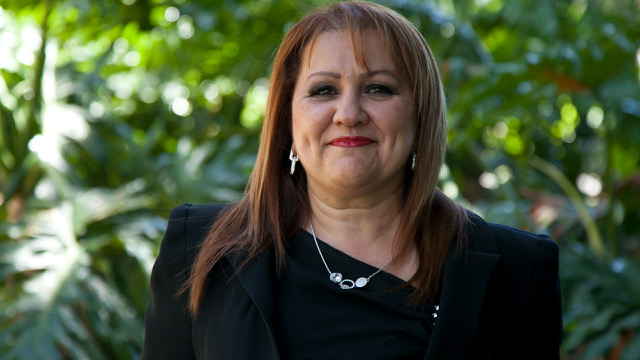Asset servicing through the clients’ eyes
Australia’s asset servicing market has broadened to such an extent that to call it ‘custody’ no longer does it justice. Its evolution over the past three decades, culminating in a deft handling of the pandemic’s impact, has left modern-day custodians in their strongest position ever.
This, perhaps dramatic, view does not come from the custodians themselves, but, rather, the main influencers on their businesses – super funds and other institutional investors, fund managers and specialist asset consultants. Like skilled investors who show their true worth in difficult markets, custodians are emerging from the impact of the pandemic as perhaps the only market segment who can lay claim to having true partnerships with their clients.
In a series of interviews with key opinion leaders among those influencers, the big six custodians are not unscarred by the past, in their view. and the future could be difficult. Custodians face uncertain times ahead due to client mergers, insourcing, political and regulatory constraints and the threats and opportunities from technological change.
However, the consensus among these opinion leaders is that the addition of new services and reporting lines on top of core custody (safekeeping and monitoring of assets) can be further extended in the future through growing opportunities in data management and security.
While we didn’t speak with any current custodians for the purposes of this report, almost all of these opinion leaders cut their teeth at one or two of the big custody firms. A summary of their commonly held views was presented at a meeting of members and associate members of the Australian Custodial Services Association on November 13.
For one prominent opinion leader, Lounarda David, the COO at IFM Investors, even the prospect of a dwindling number, but increasing size, of super funds has its silver lining. She says: “Consolidation of funds enables custodians to build more sophisticated and tailored capabilities requiring a different fee model. Organisations like IFM are also looking for partnerships where the custodian is agile and can evolve as our business evolves. I’d be happy to invest by paying more in fees for the right strategic partnership where we get value for money. There is definitely a lot of pressure on costs, but there are custodial services which are now commoditised and should be cheap to buy versus those emerging services and technology solutions that can be priced differently.
David has worked in every segment of the custody market. She started her career at State Street, which was the first provider of master custody services in Australia shortly after it opened its Australian office in 1986. She joined Mercer and became the head and a global principal of its custodial and operational advisory practice, Mercer Sentinel, joined Sunsuper as COO of investments and more recently joined the big Melbourne-based global manager IFM. IFM, which managed about $156 billion as of May this year, has an internalised operational model but plans to undertake a review and search for an outsourcing provider in the second half of next year.
Master custody’s introduction in Australia, involving oversight and reporting on core, or domestic, custody and global custody was the start of the additional services encompassing both asset servicing and investment administration. These include valuation, accounting, unit pricing, unit registry, regulatory reporting, performance reporting and analytics, mandate monitoring and, most recently, securities lending and governance assistance such as with proxy voting.
It was also the start of a major outsourcing trend because of the introduction of specialist asset management, led by Russell Investments, which also opened its Australian office in 1986, and the then-Towers Perrin (now Willis Towers Watson), which became a breeding ground for consultants and the first specialist custody consulting operation in the region. At the time, there were more than 3,000 corporate funds, mostly defined benefit. Today, there are only a handful which retain daily responsibility of all aspects of their fund.
With the advent of award super in 1986, after ‘The Accord’ was struck between the ACTU and the Hawke Government, the number of both local and international custodians also mushroomed, before they, too, went through a period of consolidation. The big six are J.P. Morgan, NAB Asset Servicing (the only Australian-owned custodian left standing), State Street, BNP Paribas Securities Services, Northern Trust and Citi (which took on most of the business of the departing RBC Investor & Treasury Services from early this year). HSBC, the largest domestic custodian, which handles the likes of State Street’s and Westpac’s direct custody, has recently recruited to launch an offering for funds and managers. If successful, this will bring the number back up to seven.
Even without HSBC, though, the consensus is that the Australian market is over serviced for custodians. Drew Vaughan, the principal of consultants Dymond Foulds & Vaughan, says: “Australia is one of the most over-serviced custody markets in the world. That has to break at some point and that may happen because of the consolidation among funds. Because we are over serviced, there is little scope for incremental price increases, so custodians need to focus on cost efficiency.” He says they can adopt offshoring, more technological improvements and develop new products. “But when new products have been delivered, experience shows that they have struggled to generate sufficient revenue,” he adds.
Vaughan described the relationship a fund has with its custodian as “the single-most important partner” it has. The not-for-profit funds particularly view their custodian in a better light than 10 years ago, he says. This is less so when you talk about the funds manager space, he says.
Vaughan also started at State Street custody and became a senior consultant at Mercer Sentinel before forming his own advisory business in 2004.
Patrick Liddy, the principal of consulting firm MSI Group, agrees that there are too many custodians, still, operating in Australia and they should seek further consolidation to be able to grow their profits. He is another of the State Street alumni who spent most of his career as a custodian at NAB Asset Servicing, where he led that firm’s sales and marketing attack on the market in the 1990s, which took it to the number one spot for several years.
But at least, Liddy believes, custodians should be safe from losing too much business for whatever reason in the current economic crisis. He says: “During times of uncertainty having someone you trust working with you is telling. During good times, there are many changes of custodian by funds and managers. During times of uncertainty, there tends to be little change. This was the case during the GFC and it will be similar in this situation. Put simply, custody changes will be put off.”
Earlier in the crisis, custodians were able to prove their mettle in two ways: they moved hundreds of staff very quickly to a work-from-home environment without mishap, at least from their clients’ perspectives, and they handled the record surge in trading, in March, when volumes tripled.
Already proud of their Disaster Recovery Plans and back-up data protocols, which probably did not include such a type of disaster but worked nonetheless, they strengthened the bond and partnership status of their client relationships. It was probably brokers who struggled most in March and custodians were able to assist with common clients.
Like other firms in the investment management chain, communication with clients became much more frequent and, in most cases, improved despite the lack of face-to-face meetings. While there is now an element of ‘Zoom fatigue’ across the industry, the quick access to more people on both sides of a relationship made them think maybe we really are all in this together.
One COO among the big custodians said, separately, that the first 20-or-so minutes of every Zoom meeting he had during the first few months was devoted to a general catch-up about the impact of the virus and how everyone was coping. It was like sharing war stories from the front.
Alan Artyun, who is currently advising a fund on operational issues, has spent most of his career in operations at big funds management firms, such as Pendal Group, as head of investment operations, and the big Asian manager Eastspring, which is an indirect subsidiary of Prudential Plc, where he held a similar position. He says the role of the custodian in the value chain has come to the fore, for managers as well as funds. Everyone had to pay attention to operational issues during COVID.
He says, though, that you have to have a problem to solve before a manager will spend significant sums on improving its investment operations platform. He recently finished a three-year task for Eaststpring which resulted in a whole new platform which “changed everything”. He finished up in Singapore and returned to Australia in August.
The manager introduced BlackRock’s Aladdin data service and outsourced its middle office to a custodian. The platform was implemented across 10 Asian locations handling a total of about US$260 billion. “When you spend on infrastructure it always goes up in big steps,” Artyun says.
Lewis Bearman, who has held roles from acting chief executive, COO and head of investment operations over his career with several fund managers, says fund managers and custodians have increasingly worked closer together with the custodians playing pivotal roles in areas such as proxy voting, corporate governance, stock lending and tax reporting.
“I think there is greater understanding of the role of the custodian and how important it is for more than ‘just holding the assets’. I think there is a differences between [a manager’s] chief executive and COO. The chief executive wants a strong relationship, comfort and good pricing. The COO wants service and all the granular requirements to ensure all parts of the business can operate,” he says.
As with super funds, the possibility of unbundling of services by fund managers will usually depend on their size, Bearman says. “Smaller [managers] will still prefer a one-stop shop that can provide the services with a single point of management.
Pricing is the key. Do custodians/ administrators want to be competed away on price and service? As a small fund manager, I don’t have the bandwidth to manage several suppliers but I need to ensure we receive good service and pricing.” Bearman is the chief operating officer at the boutique Blue Orbit Asset Management.
Within each of the big general asset consulting firms is a person or two who concentrate on investment operational matters, with Mercer, clearly, having the biggest dedicated unit. At JANA Investment Advisers, Jo Leaper, senior consultant, operational consulting, says that the firm had seen all the backoffices used by clients prior to the pandemic taking hold and for the most part they did very well.
One thing COVID did expose was the fact that more than one custodian will still accept faxes. While this is not necessarily a bad thing, because a fax may be quicker and easier for pieces of information or casual usage, Leaper says she’d like to see them disappear altogether. In a working from home environment, it is no longer an easy thing to take a fax machine home. They are invariably a part of the big photocopying/printing machine in the corner of every office.
A consistent set of requirements across the types of clients is that they all want there to be no problems, accuracy of services and the cheapest rates, she says. With more fund mergers and insourcing, custodians are trying to sell more services.
While agreeing to the notion that the market is over-serviced (“I think seven custodians will be a lot”), Leaper points out that smaller clients, particularly boutique managers, often have difficulty attracting the attention of a custodian. “Most don’t want to look at smaller super funds or start-up managers where there may not be a prospect of large revenue growth,” she says, which others say may be an additional business opportunity for custodians. Lewis Bearman agrees that there is an “ongoing reluctance of the custodians to support smaller managers”.
He suggests that tri-partite meetings between the custodian, a super fund client, and the fund’s manager(s) are beneficial for the relationships. Custodians have always struggled in their relationships with their super fund’s managers, he says. Custodians should treat those managers as clients too. “What fund managers want is to be as informed as possible.”
Some non-custodial firms such as broker J.B. Were and investment administrators such as Mainstream Fund Services, Link Fund Solutions and Fundhost, will become ‘the custodian’ for their clients and sub this out to one of the big firms. Macquarie Bank, through its Bond Street subsidiary, used to offer limited custody as a third-party service but stopped that offering several years ago.
Leaper, alongside the other consultants contacted, questions whether the market is ready for unbundling of the growing number of services the big custodians offer. Custodians are a “material outsource provider” under APRA regulations which may give them extra importance in a relationship. Leaper, however, likes to get granularity in pricing, to work out where the profit margins are for JANA clients’ fee negotiations.
She says: “Most custodians are not as ‘salesy’ as other service providers, emphasising the relationship aspect and organic growth. It’s a change from a decade ago. They recognise the long-term nature of the business. Custodians have to make sure that they are seen as a pivotal point in the relationship. You can’t do without them.”
Because custodians have quite a few touch points within their clients’ organisations it is sometimes difficult to know the hierarchy of interest in their services. As a general rule, the bigger the fund, the more likely there will be to have a COO for investments who will take on much of the responsibility for the custody relationship. But sometimes the chief executive, group COO, CIO, or CFO will be actively involved. Usually, there is no one decision maker, for instance, in the appointment of a custodian.
“The person signing the contract is not necessarily the main stakeholder,” Leaper says. “The interactions between clients and custodians are getting broader and every service provider is struggling with that.”
From a big super fund’s point of view, the evolution of the sector has meant a significant change in the types of discussions funds have with the custodians they deal with. Paul Abraham, executive manager, investment operations, at CSC (Commonwealth Superannuation Corporation), says that when he joined the investment operations sector, in 2005, discussions were primarily focused on service delivery, tactical solutions and detective controls.
“Now, discussions are predominately about investment operating models (reducing operational risk/cost and increasing efficiencies), data (governance and delivery) and technology integration. This is in addition to service delivery (this remains core), where discussions have progressed to strategic solutions, control frameworks (preventative, detective, and corrective) and deliverables.”
He says the shift has been client driven, flowing from market events, such as the GFC, global investment regulations and changing public expectations around investment transparency and cost management. “It’s been driven by the clients but enabled by custodians and other industry providers bringing innovative technology and/or innovative operational processes to the local market,” he says.
Abraham sees core custody and valuation, unit pricing, accounting, regulatory reporting and unit registry to largely remain bundled services for super funds. However, he observes that there has been a trend for performance and analytics, to be outsourced as a component, due to the bespoke performance attribution and risk measurement requirements of super funds and the availability of specialist providers.
“It will be interesting if we fast forward another 10 years and Australia has some super funds reaching the size of the Canadian plans, for example, and whether we start to see the further insourcing of investment administration, such as accounting, unit pricing and regulatory reporting. I don’t believe this will happen, but it will be one to watch out for.”
Another super fund’s manager of investment operations, Paul Coenraads of Australian Catholic Superannuation and Retirement Fund (ACSRF), takes the likelihood of unbundling of custodian service offerings much further. He says that integrated services can or will be pulled apart and alternate providers will be used to re-price component services.
This is because consolidation among funds, growth of assets size and a focus on costs will prevail. The growth of funds assets will bring more internal resources to allow a focus on improving services and reducing costs, he says. An example already underway in funds management is the separation of back from middle offices, which now denote different services and service provider.
While the jury seems to be out, from our small sample size anyway, on whether funds or managers have more complexity in their operations, Coenraads falls into the camp that emphasises the complexity of services by funds. Managers, he says, have less complexity of services and more focus on transactional efficiency and data delivery.
Coenraads has seen custody from every possible angle. He has worked in investment operations between 1994 and 2006 at custodians Westpac, State Street, Commonwealth (which bought State Street’s super business and not long after sold it onto NAB, exiting master custody altogether) and J.P. Morgan. He has also worked for stockbrokers, fund managers and a trustee company before becoming a client as head of investment operations at Mine Super and then joining ACSRF in 2014.
Both Coenraads and Patrick Liddy single out FX and cash management as two areas that have to be watched by clients of the big custodians for possible cross-subsidisation. While at NAB Liddy was involved in building an FX platform that offered funds a choice of providers alongside their custodian – in competition, in a sense, with itself – but this was unable to stand up to bank pressure to keep the status quo. He subsequently started a boutique cash management business which followed a similar model, auctioning cash on a daily basis. This was acquired by a larger privately owned mortgage and fixed income firm.
Coenraads’ advice to custodians is: “Understand your costs. Your clients are becoming more sophisticated and, through increased competition, your services are seen more as commodities. Technology will allow clients to diversify service providers. Expect more price competition on individual components of your services. If cross-subsidisation is in any way supporting your current business model – FX, cash balances, security lending – you need to re-think.”
Back to IFM’s Lounarda David for the final tip for custodians in their relationships with clients. She says: “From my experience, custodians haven’t changed all that much. They place too much reliance on their relationships at the board level and do not invest enough in working across the organisation at various levels to ensure they meet the needs of diversified and complex business areas. When you have direct engagement with the CIOs and COOs the relationship is likely to be more successful and sustained.”
Note: While ACSA assisted with the presentation of a summary of this report to members via webinar, any views expressed are those of the author and not of ACSA.















